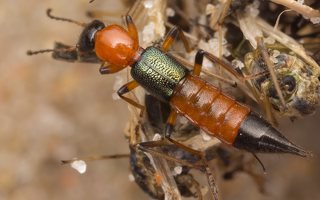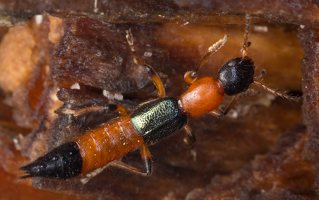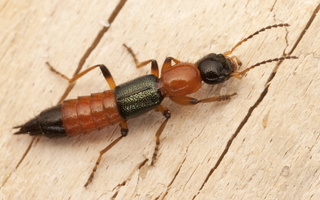- sort orderDefault
Photo title, A → Z
Photo title, Z → A
✔ Date created, new → old
Date created, old → new
Date posted, new → old
Date posted, old → new
Visits, high → low
Random - Google Map
- map
 home / Insecta · vabzdžiai / Coleoptera · vabalai / Staphylinidae · trumpasparniai / Paederus riparius · krantinis trumpasparnis
home / Insecta · vabzdžiai / Coleoptera · vabalai / Staphylinidae · trumpasparniai / Paederus riparius · krantinis trumpasparnis

-
 Paederus riparius · krantinis trumpasparnis
Paederus riparius · krantinis trumpasparnis
-
 Paederus riparius · krantinis trumpasparnis
Paederus riparius · krantinis trumpasparnis
-
 Paederus riparius · krantinis trumpasparnis
Paederus riparius · krantinis trumpasparnis
-
 Paederus riparius · krantinis trumpasparnis
Paederus riparius · krantinis trumpasparnis
-
 Paederus riparius · krantinis trumpasparnis
Paederus riparius · krantinis trumpasparnis
-
 Paederus riparius · krantinis trumpasparnis
Paederus riparius · krantinis trumpasparnis
-
 Paederus riparius · krantinis trumpasparnis
Paederus riparius · krantinis trumpasparnis
-
 Paederus riparius · krantinis trumpasparnis
Paederus riparius · krantinis trumpasparnis
-
 Paederus riparius · krantinis trumpasparnis
Paederus riparius · krantinis trumpasparnis
-
 Paederus riparius · krantinis trumpasparnis
Paederus riparius · krantinis trumpasparnis
-
 Paederus riparius · krantinis trumpasparnis
Paederus riparius · krantinis trumpasparnis
-
 Paederus riparius · krantinis trumpasparnis
Paederus riparius · krantinis trumpasparnis
-
 Paederus riparius · krantinis trumpasparnis
Paederus riparius · krantinis trumpasparnis
-
 Paederus riparius · krantinis trumpasparnis
Paederus riparius · krantinis trumpasparnis
-
 Paederus riparius · krantinis trumpasparnis
Paederus riparius · krantinis trumpasparnis
Paederus riparius · krantinis trumpasparnis
- Bunter Uferkurzflügler
- isokirjokaitikas
- krantinis trumpasparnis
- gewone oeverkortschildkever
- żarlinek gromadny, żarlinek brzegowiec
ukbeetles.co.uk/paederus-riparius
This is a generally common and often abundant species across the entire Palaearctic region, extending east to China, the far east of Russia and into the Oriental region; it occurs throughout Europe except for the far north and extends through Asia Minor, the Middle East and North Africa. Adults occur year-round and are active over a very long season in wetland habitats such as river and pond margins and marshes but also permanently wet grassland and woodland and floodplain meadows, they fly to drier areas in the autumn to overwinter in tussocks or in the soil under debris etc and migrate back in early spring. Breeding occurs through the spring and summer, and females lay eggs singly or in small groups in damp soil where the larvae will develop through the summer to produce new-generation adults in late summer and autumn. Larvae pass through two instars and develop rapidly, they are terrestrial predators but also feed on decaying plant and animal material as well as small invertebrates, pupation occurs in the soil and teneral adults have been recorded through the summer and into the autumn. Adults are predators, feeding on small insects etc, which they climb plant stems and foliage to find, and in warmer parts of Europe and Asia where they may occur in very large numbers they are considered as important control agents of aphids and other crop pests. Adults are easily seen as they are active and move rapidly in bright sun, they usually occur in numbers among litter or on the surface as well as among vegetation; they tend to overwinter communally.
7.5-8.5 mm. Head shiny black and sparsely punctured throughout, with small weakly convex eyes and smoothly-curved temples, cheeks short and curved to a straight apical margin, maxillary palps pale with the penultimate segment variously darkened, antennae dark with at least three basal segments pale. Pronotum shiny orange, smooth and glabrous but for scattered setae, elongate and only slightly narrower than the head, broadest in front of the middle and narrowed to rounded posterior angles, apical margin rounded to a short neck. Elytra metallic blue or green, elongate with sloping shoulders and separately curved apical margins, surface strongly and moderately densely punctured and with fine dark pubescence. Abdomen finely punctured and pubescent throughout, only weakly dilated towards the apex, basal segments strongly bordered, apical segments without obvious borders. Legs long and slender, the front femora shorter and broader than the others, all femora darkened in the apical half or third, tibiae substantially pale, the hind tibiae darkened only at the base, this dark area not extending along the margins. Tarsi orange but usually darkened towards the apex, fourth segment of all tarsi deeply bilobed, basal segments of front tarsi dilated, basal segments of middle and hind tarsi elongate and broadened to the apex, terminal segment of all tarsi long and slender, claws smooth and without a basal tooth. Eighth sternite in the male with a long narrow excision.
About 20 Paederus species are known to have toxic chemicals (non-protein based amides with ring structure groups, named Pederin, Pseudopederin and Pederone, produced by symbiotic bacteria passed from adults to larvae via the chorion) in their haemolymph which cause contact dermatitis, and so far as is known this is the only genus within the family to do so, skin reactions are usually mild but can be severe in some people, causing extensive inflammation and peeling skin, it is usually caused by crushing beetles against the skin but cases in temperate regions are very rare.